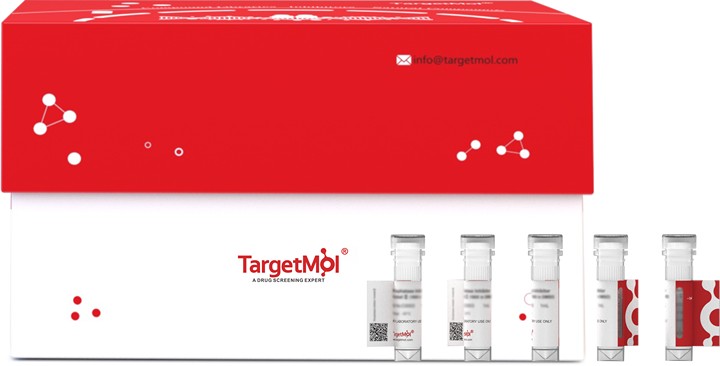Shopping Cart
Remove All Your shopping cart is currently empty
Your shopping cart is currently empty
S100A8 & S100A9 Heterodimer Protein, Human, Recombinant (His) is expressed in E. coli. The accession number is P05109 (S100A8) & P06702 (S100A9).

| Pack Size | Price | USA Warehouse | Global Warehouse | Quantity |
|---|---|---|---|---|
| 5 μg | $95 | - | In Stock | |
| 10 μg | $153 | - | In Stock | |
| 20 μg | $255 | - | In Stock | |
| 50 μg | $493 | 7-10 days | 7-10 days | |
| 100 μg | $849 | - | In Stock | |
| 200 μg | $1,530 | 7-10 days | 7-10 days | |
| 500 μg | $3,390 | 7-10 days | 7-10 days |
| Biological Activity | Activity has not been tested. It is theoretically active, but we cannot guarantee it. |
| Description | S100A8 & S100A9 Heterodimer Protein, Human, Recombinant (His) is expressed in E. coli. The accession number is P05109 (S100A8) & P06702 (S100A9). |
| Species | Human |
| Expression System | E. coli |
| Tag | C-His |
| Accession Number | P05109 (S100A8) & P06702 (S100A9) |
| Synonyms | S100 calcium-binding protein A9,S100 calcium-binding protein A8,Protein S100-A9,Protein S100-A8,MRP-8,MRP-14,CFAG,Calgranulin-A |
| Construction | Met1-Glu93 (S100A8) and Thr2-Pro114 (S100A9). His tag at the C-Terminus of S100A8. |
| Protein Purity | > 95% as determined by BisTris PAGE |
| Molecular Weight | 11.7 kDa (S100A8)&13.2 kDa (S100A9) (Predicted same as reducing conditions) |
| Endotoxin | < 1.0 EU per μg protein as determined by the LAL method. |
| Formulation | Lyophilized from 0.22μm filtered solution in 2mM DTT, PBS (pH 7.2). Normally 8% trehalose is added as protectant before lyophilization. |
| Reconstitution | Reconstitute the lyophilized protein in sterile deionized water. The product concentration should not be less than 100 μg/ml. Before opening, centrifuge the tube to collect powder at the bottom. After adding the reconstitution buffer, avoid vortexing or pipetting for mixing. |
| Stability & Storage | Upon receiving, the product remains stable up to 6 months at -20 °C or below. Upon reconstitution, the product should be stable for 3 months at -80 °C. Avoid repeated freeze-thaw cycles. |
| Shipping | In general, Lyophilized powders are shipping with blue ice. Solutions are shipping with dry ice. |
| Research Background | Calprotectin, a member of the widespread calcium-binding S-100 protein family, is present in remarkably high concentration in the cytoplasm of human neutrophils. The calprotectin molecule is composed of light (MRP8) and heavy (MRP14) subunits. Although not secreted from intact neutrophils, calprotectin release from dead and dying neutrophils creates high concentrations of the protein in inflammatory or abscess fluids and in the intestinal tract lumen of patients with inflammatory bowel disease. |
| Size | Quantity | Unit Price | Amount | Operation |
|---|

Copyright © 2015-2025 TargetMol Chemicals Inc. All Rights Reserved.